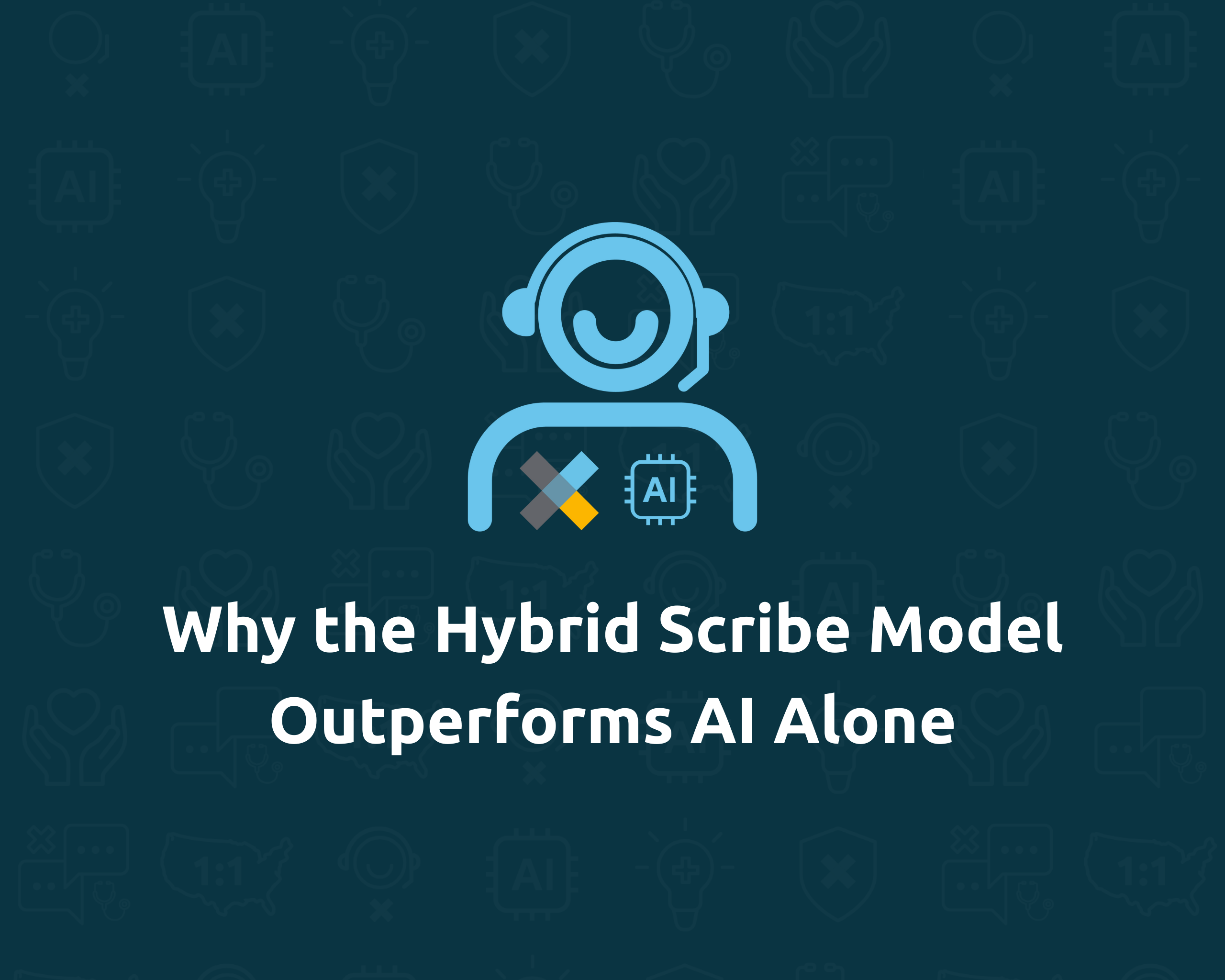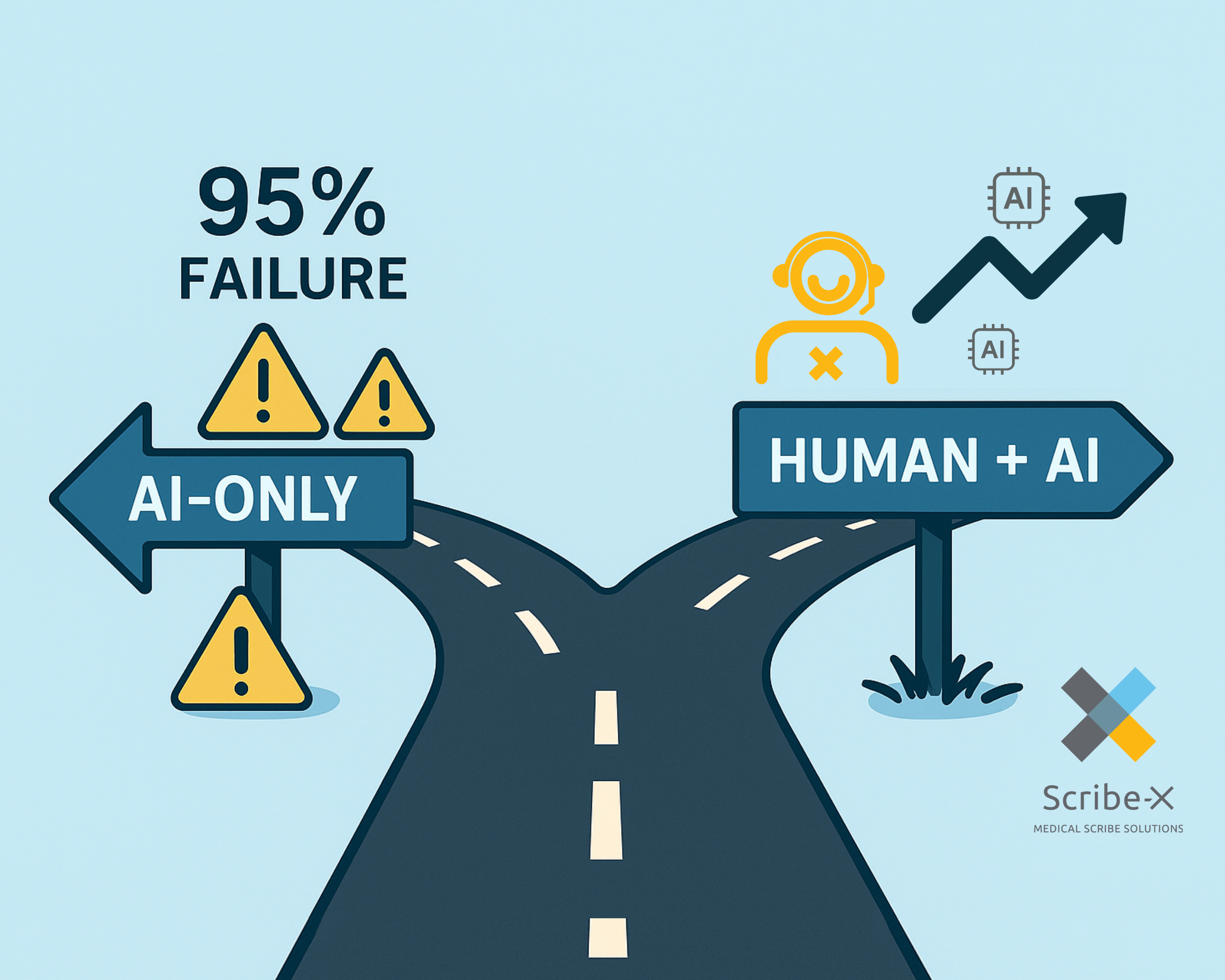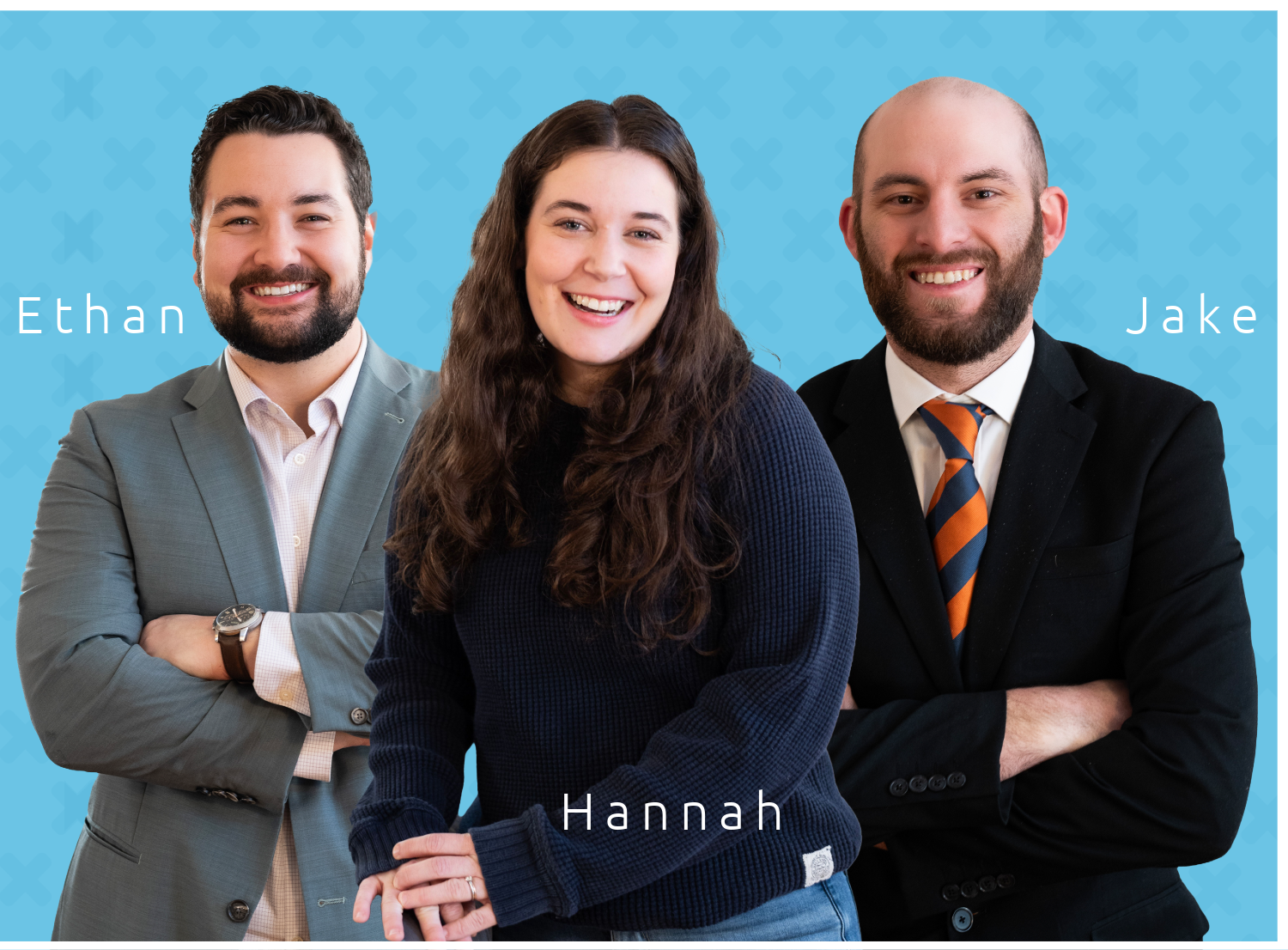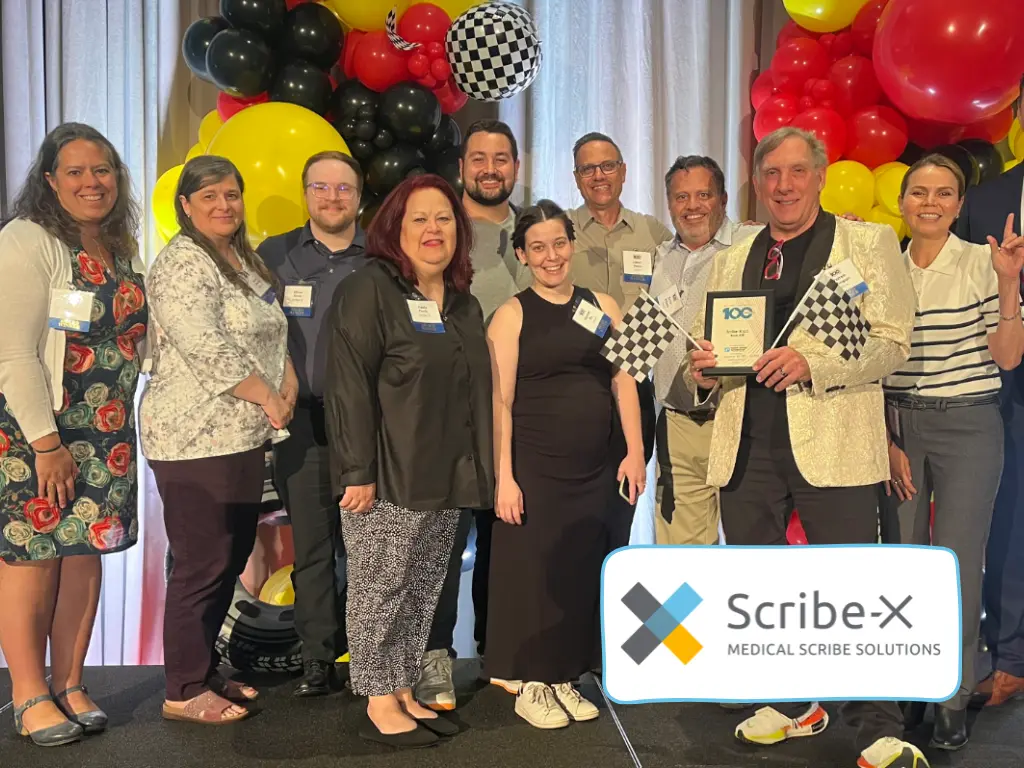Introduction: AI Promised Simplicity. It Delivered Complexity.
Artificial intelligence is everywhere in healthcare, especially in clinical documentation. It was supposed to reduce provider workload, eliminate after-hours charting, and improve efficiency across the board.
Instead, many organizations now find themselves stuck with AI-only tools that fall short. Notes require correction, compliance issues resurface, and documentation still feels like a burden. Providers are still working late. Quality is still uneven. The promised solution has quietly become another problem to manage.
What separates high-performing systems from struggling ones is this: they stopped expecting AI to do it all. They embraced a hybrid model that pairs AI’s efficiency with trained human expertise.
Where AI Alone Breaks Down
Standalone AI scribing tools have a limit. Once a patient conversation becomes complex or nuanced, AI struggles to keep up. The burden falls back on the provider.
Here’s what CEOs and CIOs are discovering:
- Providers still spend hours correcting AI notes
- Chart accuracy suffers when clinical nuance is missed
- Compliance risks increase as key details go undocumented
- Documentation fatigue leads to burnout and turnover
Instead of saving time, AI shifts the workload.
The Hybrid Advantage: Better by Design
Scribe-X’s hybrid model, Human+AI, combines artificial intelligence with highly trained human scribes who finalize notes.
This is not just an upgrade. It is a rethink of the documentation process.
The model delivers:
- AI-powered efficiency to provide a reliable draft framework
- Human expertise to add accuracy, personalization, and compliance review
- Faster adaptability, since trained scribes can be updated far more quickly than waiting for new AI training cycles
- Same-day note closure that accelerates revenue and reduces denials
It is not just efficient. It is reliable, adaptable, and proven to reduce documentation time by 2 to 3 hours per provider, per day.
Why It Matters for CEOs and CIOs
For CEOs, the hybrid model enables sustainable growth. It reduces turnover, increases patient access, and improves provider satisfaction without raising operating costs. Scribe-X customers often recover full program costs by seeing just one or two more patients per day.
For CIOs, it is a low-lift implementation that integrates securely with any major EHR. The ScribeBridge platform requires minimal IT support and meets all HIPAA and data security standards.
Unlike AI-only vendors that require constant editing or “babysitting,” Scribe-X becomes a true extension of the care team.
Real Organizations. Real Results.
- Vancouver Clinic eliminated after-hours charting and improved provider satisfaction after transitioning away from legacy scribe models and AI-only support.
- Hometown Health Center increased its raw HCC scores by 11.67 percent and moved into the top 5 across every quality category within six months of adopting Scribe-X’s remote scribes.
These organizations did not wait for AI to catch up. They moved forward with a solution that works today.
The Executive Question: What Is the Cost of Doing Nothing?
AI-only tools seem inexpensive at first glance. But the hidden costs of burnout, turnover, denied claims, and compliance risk are far more expensive in the long run.
Every hour your providers spend editing notes or chasing charts is time lost to patient care and revenue-generating activity.
A hybrid model protects revenue, supports your providers, and aligns your operations for scalable growth. That is not just a better choice. That is a competitive advantage.
Are You Ready to Compare Your AI Solution Against the Hybrid Standard?



